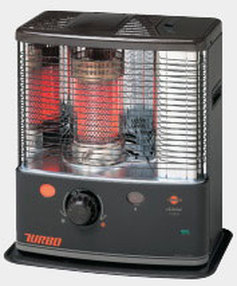HEATER FIRES
Heating equipment is a leading cause of home fires during the months of December, January and
February, and trails only cooking equipment in home fires year-round.
Facts & figures
Safety tips:
February, and trails only cooking equipment in home fires year-round.
Facts & figures
- In 2001, an estimated 54,900 home heating equipment fires were reported to U.S. fire departments, resulting in 220 civilian deaths, 1,120 civilian injuries and $502 million in property damage.
- Two of every three home heating fires in the U.S. in 2001, and two of every three related deaths, were attributed to portable and fixed space heaters and related equipment.
- Only 20% of the home heating equipment fires in 2001 began with central heating units.
- Common causes of space heating home fires are: lack of regular cleaning, leading to creosote build-up, in wood-burning devices and associated chimneys and connectors; failing to give
space heaters space by installing or placing them too close to combustibles; basic flaws in the construction or design of wood burning heating equipment; fuel spills or leaks involving liquid- or gas-fueled heating equipment.
Safety tips:
- When buying a new unit, make sure that a qualified technician installs the unit or checks that the unit has been installed properly.
- For wood or coal stoves or fireplaces, have a professional inspect the chimney, chimney connector and other related equipment every year, and have them cleaned as often as the inspections indicate.
- Keep space heaters at least three feet (or one meter) away from anything that can burn.
- Fuel portable kerosene heaters in a well-ventilated area away from flames or other heat sources, and only when the device has cooled completely. Use only the type of kerosene specified by the manufacturer, and never use gasoline. Use only if such heaters are legal in your community.
- When turning a heating device on or off, follow the manufacturer's instructions. When buying heaters, choose devices with automatic shut-off features.
- Make sure any gas-fueled heating device is adequately ventilated. Unventilated gas space heaters in bedrooms or bathrooms must be small and well-mounted. Never use liquefied-petroleum gas heaters with self-contained fuel supplies in the home.
- Portable space heaters should be turned off every time you leave a room or go to bed.
- Allow ashes to cool before disposing. Dispose ashes in a metal container.

